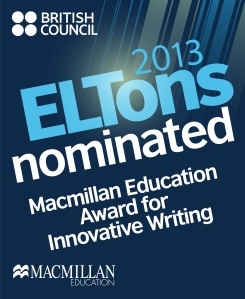This week I’ve made a few small changes that have completely overhauled my language learning.
At work, I spend most of my time thinking about to how to bring research in linguistics, psychology and neuroscience to language teaching. Meanwhile, my own language learning efforts have been failing miserably.
So last week I set myself a language challenge as personal odyssey to explore how I could draw from research to boost my own efforts in learning Mandarin Chinese. The good news is, it’s worked a treat!
Here are two techniques that have made a real difference to my learning this week:
1. Boost motivation with teamwork
How often do you keep the promises you make to yourself?
Language learning is often a solitary endeavour, which means it can easily slide down your list of priorities. Research at Stanford University shows that people who feel like they’re working as a team (even though they may not physically be working together) are more interested in the task and more likely to perform better.
Get into the team spirit by signing up to a language learning forum like this one.
2. Speed up vocabulary learning with spaced repetition
Spaced repetition is a memorising technique which draws from the “spacing effect”. This effect, first spotted by the father of memory research Hermann Ebbinghaus, means that you are more likely to remember information which is studied a few times over a longer period of time compared to many times within a short space of time.
Because of its efficacy in helping people to memorise large amounts of information, spaced repetition techniques have received a lot of attention in the field of second language vocabulary learning. There are some highly effective online programmes which incorporate automatic spacing to help you optimise your vocabulary learning. Anki and Memrise are well worth checking out.
Finally, here’s one technique I’ll be trying out next week:
3. Set small, attainable goals
Working towards a large goal like “learn language X” can be overwhelming. My language learning targets are often a little on the vague side, a known motivation killer.
Research shows that setting smaller subgoals is highly beneficial to learning. For example, Bandura and Shunk (1982) demonstrated that, over 7 sessions, people who were instructed to complete 6 pages of maths problems per session completed the task faster and more accurately than people who were given 42 pages from the outset.
Reaching a goal (no matter how big or small) gives you a little hit of dopamine, the neurotransmitter associated with reward and pleasure (Schultz 2002). Setting small targets and achieving them regularly boosts your mood and keeps you feeling positive about your language learning.
Do you use any of these techniques in your learning? Do they work for you? Let us know in the comments below!
Bandura, A., & Schunk, D. H. (1981). Cultivating competence, self-efficacy, and intrinsic interest through proximal self-motivation. Journal of Personality and Social Psychology, 41(3), 586.
Priyanka B. Carr, Gregory M. Walton (2014) Cues of working together fuel intrinsic motivation. Journal of Experimental Social Psychology, 53, 169.
Schultz, W (2002) Getting formal with dopamine and reward, Neuron, 36, 241.











